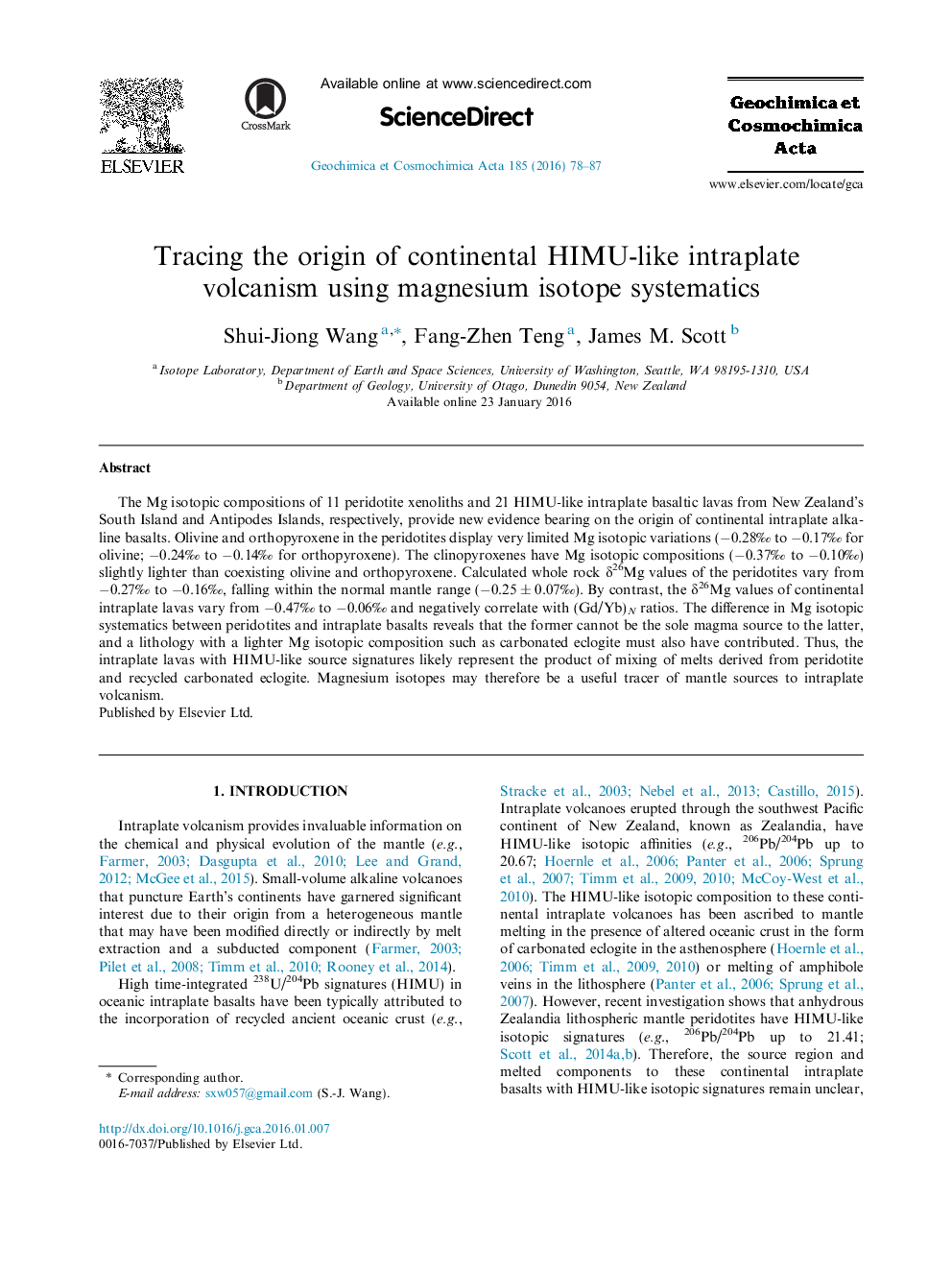| Article ID | Journal | Published Year | Pages | File Type |
|---|---|---|---|---|
| 6437349 | Geochimica et Cosmochimica Acta | 2016 | 10 Pages |
The Mg isotopic compositions of 11 peridotite xenoliths and 21 HIMU-like intraplate basaltic lavas from New Zealand's South Island and Antipodes Islands, respectively, provide new evidence bearing on the origin of continental intraplate alkaline basalts. Olivine and orthopyroxene in the peridotites display very limited Mg isotopic variations (â0.28â° to â0.17â° for olivine; â0.24â° to â0.14â° for orthopyroxene). The clinopyroxenes have Mg isotopic compositions (â0.37â° to â0.10â°) slightly lighter than coexisting olivine and orthopyroxene. Calculated whole rock δ26Mg values of the peridotites vary from â0.27â° to â0.16â°, falling within the normal mantle range (â0.25 ± 0.07â°). By contrast, the δ26Mg values of continental intraplate lavas vary from â0.47â° to â0.06â° and negatively correlate with (Gd/Yb)N ratios. The difference in Mg isotopic systematics between peridotites and intraplate basalts reveals that the former cannot be the sole magma source to the latter, and a lithology with a lighter Mg isotopic composition such as carbonated eclogite must also have contributed. Thus, the intraplate lavas with HIMU-like source signatures likely represent the product of mixing of melts derived from peridotite and recycled carbonated eclogite. Magnesium isotopes may therefore be a useful tracer of mantle sources to intraplate volcanism.
